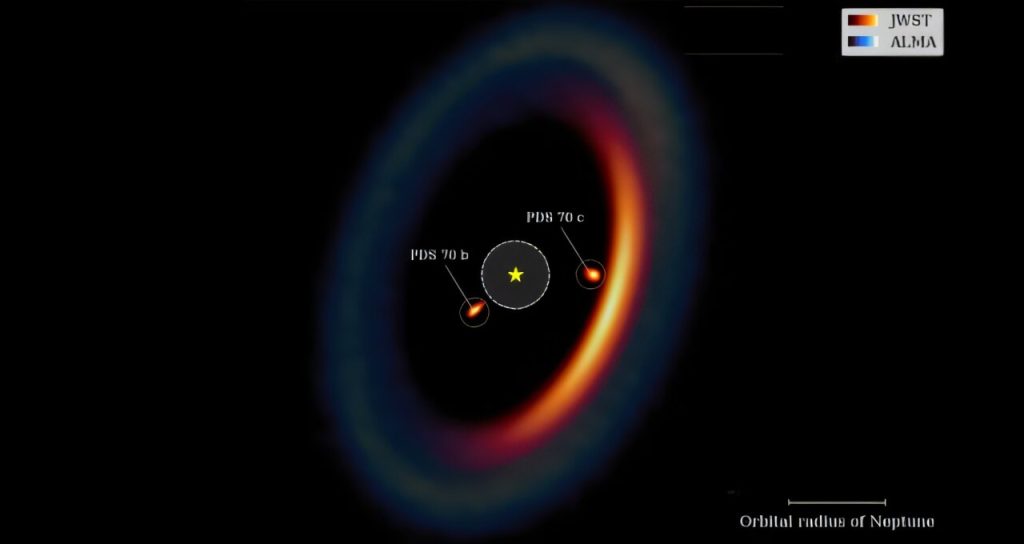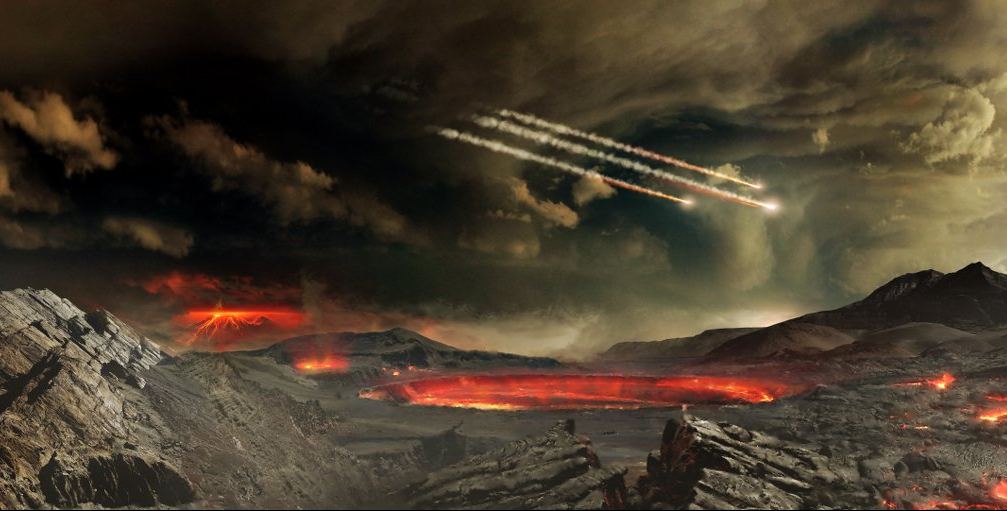Astronomers have taken a major step in understanding how planets form, thanks to the James Webb Space Telescope (JWST). A team led by University of...
Vous n'êtes pas connecté
- English
- Français
- عربي
- Español
- Deutsch
- Português
- русский язык
- Català
- Italiano
- Nederlands, Vlaams
- Norsk
- فارسی
- বাংলা
- اردو
- Azərbaycan dili
- Bahasa Indonesia
- Հայերեն
- Ελληνικά
- Bosanski jezik
- українська мова
- Íslenska
- Türkmen, Түркмен
- Türkçe
- Shqip
- Eesti keel
- magyar
- Қазақ тілі
- Kalaallisut ; kalaallit oqaasii
- Lietuvių kalba
- Latviešu valoda
- македонски јазик
- Монгол
- Bahasa Melayu ; بهاس ملايو
- ဗမာစာ
- Slovenščina
- тоҷикӣ ; toğikī ; تاجیکی
- ไทย
- O'zbek ; Ўзбек ; أۇزبېك
- Tiếng Việt
- ភាសាខ្មែរ
- རྫོང་ཁ
- Soomaaliga ; af Soomaali
 Maroc - THEPARADISE.NG - A La Une - 15/Feb 01:50
Maroc - THEPARADISE.NG - A La Une - 15/Feb 01:50
Witnessing the birth of planets: Webb provides unprecedented window
An international team of researchers, including those from the University of Michigan, have used the James Webb Space Telescope (JWST) to witness the birth of planets around the young star system PDS 70. PDS 70, located 370 light years away, is about 5 million years old and is one of the most extensively studied young stellar systems. It is the only known protoplanetary disk system where multiple planets have been detected within the disk from which they are forming. This system allows scientists to observe planet formation and evolution in their early stages. In PDS 70, a disk of gas Read Full Article At: Witnessing the birth of planets: Webb provides unprecedented window
Articles similaires
Scientists Discover Milky Way Black Hole Constantly Emits Flares
The supermassive black hole in the heart of the Milky Way Galaxy, Sagittarius A*, constantly emits flares like fireworks. Observation from the James...
Webb maps a full picture of star formation
Researchers using NASA’s James Webb Space Telescope have finally solved the mystery of how a massive galaxy cluster is forming stars at such a high...
Breakthrough! James Webb Telescopes Discovers Planet Birth in Action
Future Space How do planets form? The James Webb Space Telescope has provided breathtaking new insights into HH 30, a[...]
5 Incredible Things We Have Already Discovered Thanks to the James Webb Telescope!
Future Space The James Webb Telescope is set to revolutionize our knowledge of the universe – and indeed, the $10[...]
Nasa finds rare ‘bullseye’ galaxy with 9 star-filled rings, 250,000 light-years wide
Nasa's Hubble Space Telescope has captured LEDA 1313424, a galaxy with nine star-filled rings, the most ever detected, resulting from an impact with a...
Milky Way’s central black hole constantly bubbles with light
Astronomers using NASA’s James Webb Space Telescope (JWST) have taken a detailed look at the supermassive black hole at the center of our Milky...
Could a climate megaproject cloud Chile's unparalleled views of universe?
by Paulina ABRAMOVICHAs night falls on the Atacama desert in northern Chile four giant telescopes turn their gaze towards the star-strewn heavens.The...
Water arrived in the final stages of Earth’s formation
Roughly 4.6 billion years ago, the Sun was born from the gas and dust of a nebula that underwent gravitational collapse. The remaining gas and dust...
Wow! Cosmic Valentine’s Day views from James Webb Space Telescope and Hubble in 4K
Future Space For Valentine’s Day see some of Space.com’s favorite views from the James Webb Space Telescope and Hubble Space[...]
Les derniers communiqués
-
Aucun élément








